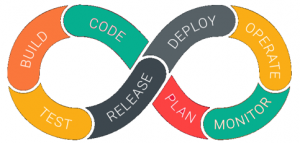“Automation First” – CIO’s Business Acceleration Strategy

There is hardly any business today that does not utilize IT to run some or all of its processes. From customer-facing channels to internal processes such as finance, human resources, engineering, administration, marketing, sales, and many more, IT is deeply integrated into every aspect of an organization. Since technology impacts every facet of the business, modern CIOs are facing many challenges to keep pace with the organization’s demand for technology transformation and enablement. This has led to the demand for quick turnaround time and agility while implementing technology projects to help accelerate operations, pace of innovation, and response to changes in the market dynamics.
A McKinsey research shows that about 50 percent of tasks are automatable with the technology available today. That leaves another 50 percent tasks that are non-automatable including the decision-making steps, interactions, and handoffs that analytics and other technologies can improve but not entirely put on autopilot. 50 percent is a good number to start with.
“57 percent of businesses have already started on an automation journey, with another 18 percent planning to kick-off something within the next couple of years.”
In this article, I will discuss various dimensions for the CIOs to consider to achieve this 50% automation target by adopting the “Automation First” approach.
The “Automation First” Mindset
Adoption of automation is becoming more critical for quick response to the competitive marketplace, but the success depends on how you go about bringing the transformation within your organization’s mindset. Given the fact that automation has been related to job cuts and redundant workforce over the past years, it’s a difficult and uphill task; automation is the only mindset through which you can thrive in the ever-changing world of technology. You need to create a balance and foster an atmosphere of re-skilling your workforce to bring better value without sacrificing the bottom-line. The atmosphere where all your departments and teams come together and adapt to the idea of “Automation First” is the initial step towards achieving this mindset. As a CIO you can help by creating a strategy that revolves around some basic pillars:
- Lead from the front: To achieve this goal at an organization, the leaders would have to adopt it first and create stories about the adoption of automation in technologies within the teams.
- Empowering people: Traditionally, the workforce had accepted manual processes as part of their BAU jobs; we need to empower them to break that mindset and invest and innovate in ideas to bring in automation into all the mundane tasks.
- Re-skilling / upskilling and creating new opportunities: Re-shaping and bringing in the tools for automation and collaboration among the workers together with re-skilling them on these tools would motivate and spread the culture around. At the same time, CIOs are responsible for identifying and exploring new opportunities that make it possible for them to fulfill their future aspirations.
- Organization strategy: Automation must be built into the goals of the organization as well as the goals of the workforce.
The “Automation First” Approach For IT Activities
Making IT processes more efficient and effective should always be prioritized. When implemented correctly, automation can increase the speed and accuracy, and thus eliminate mundane operational tasks from the shoulders of IT personnel.
As a CIO, it’s important to transform the organizational workforce to focus on higher-value work, eliminating the need for them to do routine work which can be fully or partially automated. There are various ways of doing it by leveraging new evolving technologies and tools. CIOs should encourage the teams to adopt automation first approach during the Software Development Life Cycle to accelerate application development, testing, release and deployment process, security testing, monitoring, IT infrastructure management, and application delivery. Each team needs to think about automation first while doing their day-to-day work and deliver faster to their business owners.
Let’s talk more about the IT automation first strategy, which is needed to bring about change and transformation in their standard SDLC processes:
- Software Designing: It’s not about the tools but the mindset that is important while designing applications. The team must think of modern technologies that can be utilized to provide better automation opportunities when implemented. The design should also be considered based on less human engagement and deploy more automation techniques to accomplish most of the standard business activities. For example, technologies like AI Chatbots replacing FAQs or Live Agents, Augmented Reality or RPA for showcasing products, Artificial Intelligence & RPA to replace standard business processes. Therefore, while designing, keeping such technologies in mind would pave the way for the mundane processes to achieve automation.
- Software Development: Gone are the days where there was a single platform with one programming language used to code the entire software. Think more in terms of multiple platforms and multiple languages suited for each process required in the software. For instance, keeping the cloud platform, micro-service based application in mind and thinking about auto-scaling and auto-healing software that is deployed on cutting-edge containerized platforms like Kubernetes would go a long way in providing the level of automation for build, unit test, security vulnerability test, containerization, and deployment activities, etc. This will give your organization a major advantage to develop and deploy your application faster.
- Software Testing: Automation should be the core of your testing strategy. Think about the automation of all the regression tests, performance tests, or manual tests that take a huge amount of manhours every time you change something or develop a new version of your software. At Maveric, we use our integrated Quality Engineering platform, which provides us tools and expertise for deploying a fully-automated and performance-tuned platform to enable continuous automation in the entire testing life-cycle; addressing all different layers of the application such as UI, back-end APIs, and surrounding system integrations.
- Software Deployment: If you are still taking days getting stuck with manual tasks or need downtime for your business application to deploy fixes, bugs, or new features, then you’re behind the curve. In today’s age, the deployment pipeline should be continuous without interrupting your operations or causing downtimes. Think about how to introduce new features almost every few days. Your software deployment strategy should lean towards DevOps and CI/CD (Continuous Integration and Continues Delivery) model.
- IT Infrastructure Platforms: IT infrastructure management is a broad term, however, to enable better automation from provisioning to production, each stage of the infrastructure management process can leverage relevant tools and techniques to automate most of the activities. For example, if you are using cloud services, you can choose from IaaS, PaaS, or SaaS service models. As you move from IaaS to SaaS, the manual work in your IT infrastructure management process reduces substantially. You need to strike a balance between automation and regulatory compliance requirements as per your industry standards, but there are still a lot of tools and technologies available to make that automation work. Automating the provisioning, configuration, and management of your IT infrastructure will provide you a better competitive advantage and your business can respond to market dynamics faster. Your IT infrastructure management strategy should also lean towards cloud, containerized platforms, DevOps, and CI/CD model.
Conclusion
Setting “automation first” as a goal for a team or a department would never work in the long run. You have to work continuously with all the stakeholders and embed this in the DNA of your organization. You can be assured that with automation at the realm of your organization, much more work would get done. You’ll realize that your company is able to release more software products or features in less time. Your business teams can compete in the market as they have much faster access to data and newer technologies. The leadership and management teams can make smarter, more informed decisions faster. In the end, building the automation mindset across the organization, will reduce your dependencies and risks and help you operate your business in a better, more transparent way.
View






